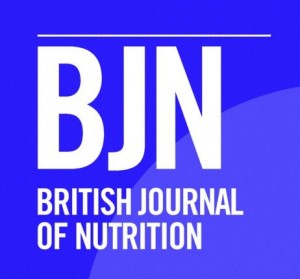EMBARGOED UNTIL: 00:01Hrs Tuesday 15th July 2014 – set by the academic journal British Journal of Nutrition
Source Information: “Higher antioxidant concentrations and less cadmium and pesticide residues in organically-grown crops: a systematic literature review and meta-analyses.” Baranski, M. et al. British Journal of Nutrition, July 15th 2015.
New study finds significant differences between organic and non-organic food
In the largest study of its kind, an international team of experts led by Newcastle University, UK, has proved that organic crops and crop-based foods are up to 60% higher in a number of key antioxidants than conventionally-grown crops.
Analysing 343 studies into the compositional differences between organic and conventional crops, the team found that a switch to eating organic fruit, vegetable and cereals – and food made from them – would provide additional antioxidants equivalent to eating between 1-2 extra portions of fruit and vegetables a day.
The study, published today in the prestigious British Journal of Nutrition, also shows significantly lower levels of toxic heavy metals in organic crops. Cadmium, which is one of only three metal contaminants along with lead and mercury for which the European Commission has set maximum permitted contamination levels in food, was found to be almost 50% lower in organic crops than conventionally-grown ones.
Newcastle University’s Professor Carlo Leifert, who led the study, says: “This study demonstrates that choosing food produced according to organic standards can lead to increased intake of nutritionally desirable antioxidants and reduced exposure to toxic heavy metals”.
“This constitutes an important addition to the information currently available to consumers which until now has been confusing and in many cases is conflicting.”
New methods used to analyse the data
This is the most extensive analysis of the nutrient content in organic vs conventionally-produced foods ever undertaken and is the result of a groundbreaking new systematic literature review and meta-analysis by the international team.
The findings contradict those of a 2009 UK Food Standards Agency (FSA) commissioned study which found there were no substantial differences or significant nutritional benefits from organic food.
The FSA commissioned study based its conclusions on only 46 publications covering crops, meat and dairy, while Newcastle led meta-analysis is based on data from 343 peer-reviewed publications on composition difference between organic and conventional crops now available.
“The main difference between the two studies is time,” explains Professor Leifert, who is Professor of Ecological Agriculture at Newcastle University.
“Research in this area has been slow to take off the ground and we have far more data available to us now than five years ago”.
Dr Gavin Stewart, a Lecturer in Evidence Synthesis and the meta-analysis expert in the Newcastle team, added: “The much larger evidence base available in this synthesis allowed us to use more appropriate statistical methods to draw more definitive conclusions regarding the differences between organic and conventional crops”
What the findings mean
The study, funded jointly by the European Framework 6 programme and the Sheepdrove Trust, found that concentrations of antioxidants such as polyphenolics were between 18-69% higher in organically-grown crops. Numerous studies have linked antioxidants to a reduced risk of chronic diseases, including cardiovascular and neurodegenerative diseases and certain cancers.
Substantially lower concentrations of a range of the toxic heavy metal cadmium were also detected in organic crops (on average 48% lower).
Nitrogen concentrations were found to be significantly lower in organic crops. Concentrations of total nitrogen were 10%, nitrate 30% and nitrite 87% lower in organic compared to conventional crops. The study also found that pesticide residues were four times more likely to be found in conventional crops than organic ones.
Professor Charles Benbrook, one of the authors of the study and a leading scientist based at Washington State University, explains: “Our results are highly relevant and significant and will help both scientists and consumers sort through the often conflicting information currently available on the nutrient density of organic and conventional plant-based foods.”
Professor Leifert added: “The organic vs non-organic debate has rumbled on for decades now but the evidence from this study is overwhelming – that organic food is high in antioxidants and lower in toxic metals and pesticides.
“But this study should just be a starting point. We have shown without doubt there are composition differences between organic and conventional crops, now there is an urgent need to carry out well-controlled human dietary intervention and cohort studies specifically designed to identify and quantify the health impacts of switching to organic food.”
The authors of this study welcome the continued public and scientific debate on this important subject. The entire database generated and used for this analysis is freely available on the Newcastle University website (http://research.ncl.ac.uk/nefg/QOF) for the benefit of other experts and interested members of the public.
Ends
Media Contacts:
Professor Carlo Leifert, Professor of Ecological Agriculture, School of Agriculture, Food and Rural Development, Newcastle University. Email: carlo.leifert@ncl.ac.uk
Louella Houldcroft, Senior Communications Manager, Faculty of Science, Agriculture and Engineering, Newcastle University; Tel: +44 (0) 191 208 5108; Mob: 07989 850511; Email: Louella.houldcroft@ncl.ac.uk

